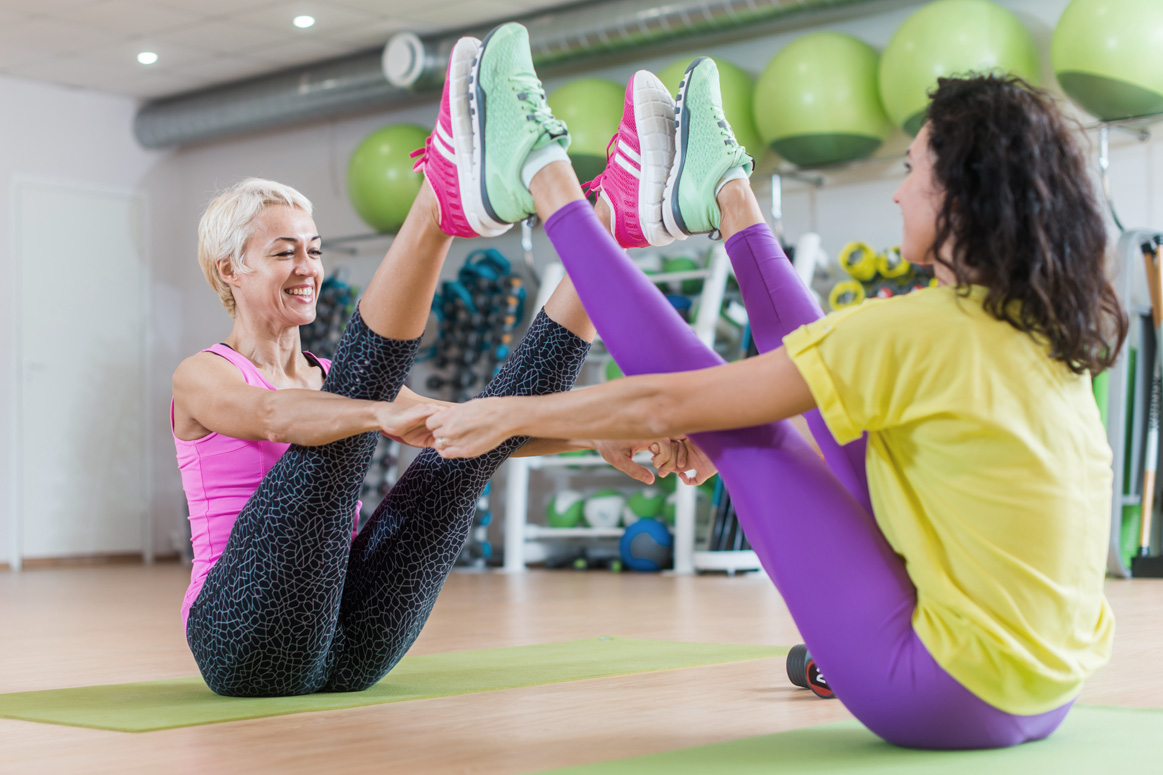I’ll be honest, as a business owner and a mum of five, I don’t get a lot of time to work out. But recently, with a few spare minutes up my sleeve, I managed to make it to the gym, only to find my stress levels in overload as I watched dozens of people launch into heavy workout routines… without an exercise warm up first!
Ever since we were doing PE in primary school, the importance of warming up before we get stuck into a track and field day, a game of footy or hockey or even a dance routine was really driven home.
We were told not warming up could lead to injury and poor performance. Having now specialised in sports recovery, I absolutely know this to be true!
So why aren’t people doing an exercise warm up anymore?
Why is an exercise warm up important before exercising?
A few days ago, during the cold snap, I jumped in my car to take the kids to school, only to notice the little blue light appear on my dash, as my engine spluttered to life, and struggled with the strain of being woken up too early.
The light carries with it a very important message — it tells us our car needs to warm up before it can really start working at full capacity. It tells us if our car isn’t given the chance to warm up, it might suffer damage that we will inevitably have to deal with later.
That little blue light got me thinking!
When humans were being created, whoever was doing the designing should have fit us all with a little blue light! The light should only switch off when our bodies are adequately warmed up before we put them into top gear.
Warming up does exactly as it sounds, it increases the temperature in our muscles and improves our blood flow which can help us perform better and most importantly, can help prevent injuries later.
A good warm up and stretching can enhance flexibility and gives your joints a greater range of motion, as well as mentally preparing you for upcoming rigorous activity.
How can you warm up most effectively?
One of the big challenges for many people who don’t work with coaches or personal trainers is knowing how to warm up in a way that will be most beneficial.
Luckily there has been an incredible body of research conducted in this area!
When planning your warm up, take a gradual approach; think of it as starting slow and then little-by-little, increasing the intensity until your body is ready for the main game.
Taking a more gradual approach and building up over time can better prepare your muscles, joints, circulatory and respiratory systems.
Your warm up should be at least ten minutes, but preferably longer. Professional sports teams often warm up for in excess of 30 minutes. If you intend to do a very intense work out, or, for example, play a football game, the longer the exercise warm up, the better prepared your body will be.
Similarly, your warm up routine should depend on the activity you plan to do following it; a football game warm up should be different to a warm up for a marathon.
What this all equates to, is there is no standard, ‘one-size-fits-all’ warm up. But that doesn’t mean you should just skip it and dive into your work out!
As a general rule, start with some slow, low-level cardio that will begin to gradually increase your heart-rate, without stressing your body. This is a good introduction to any exercise warm up.
A systematic review of the effects of warming up, showed in some cases, warm up can have a detrimental effect on performance because the warm up activity doesn’t suit the actual exercise or sporting activity to follow, or it isn’t long enough to actually impact the temperature of the muscles.
For this reason, your next activities should really mirror the way you will need to move and perform during your main work out or game so you are targeting the right muscles. This might include stretching, low-level aerobic activity and movements, like directional changes, that reflect your sport or chosen physical activity.
The intent is to improve the blood flow to the muscles you will most rely on, get your heart ready for the upcoming activity, prepare your nerve pathways to improve muscle performance and increase muscle and core temperature.
If you are exercising or playing sport without a trainer, it is absolutely worth working with a trainer who practices evidence-based approaches, even if only to design your exercise warm up and cool down.
Don’t forget your recovery
Being in my line of work, it would be an oversight for me not to quickly mention what should be happening after you finish exercise.
Unfortunately, like exercise warm ups, so many people forget to cool down and gradually ease out of an intensive exercise session, and rather, they just finish a game, a marathon or a heavy treadmill run and head off for a shower.
Specialising in ensuring your body recovers and stays at its best, I cannot emphasise enough the importance of your routine after your main work out is complete.
If nothing else, a cool down needs to look after your heart. Rather than simply stopping and allowing your heart rate to plummet, which can be a shock for your body, it’s important to include some time gradually tapering off or some low-level cardio to slow things down more gently.
Likewise, some static stretching can help relax your muscles and provide a good foundation not only for recovery, but also for better performance next time.
I work with a lot of professional athletes who absolutely swear by sports recovery sessions in the sauna, spa, in compression suits and on the sports massage table. They use these therapies to decrease risk of injury, improve circulation and promote healing.
When so many people spend three or even five days each week in the gym, this type of recovery session is now no longer just suited to pro athletes, it is an important process to include regularly in all exercise and well-being schedules.
Check out our sports massage options.




